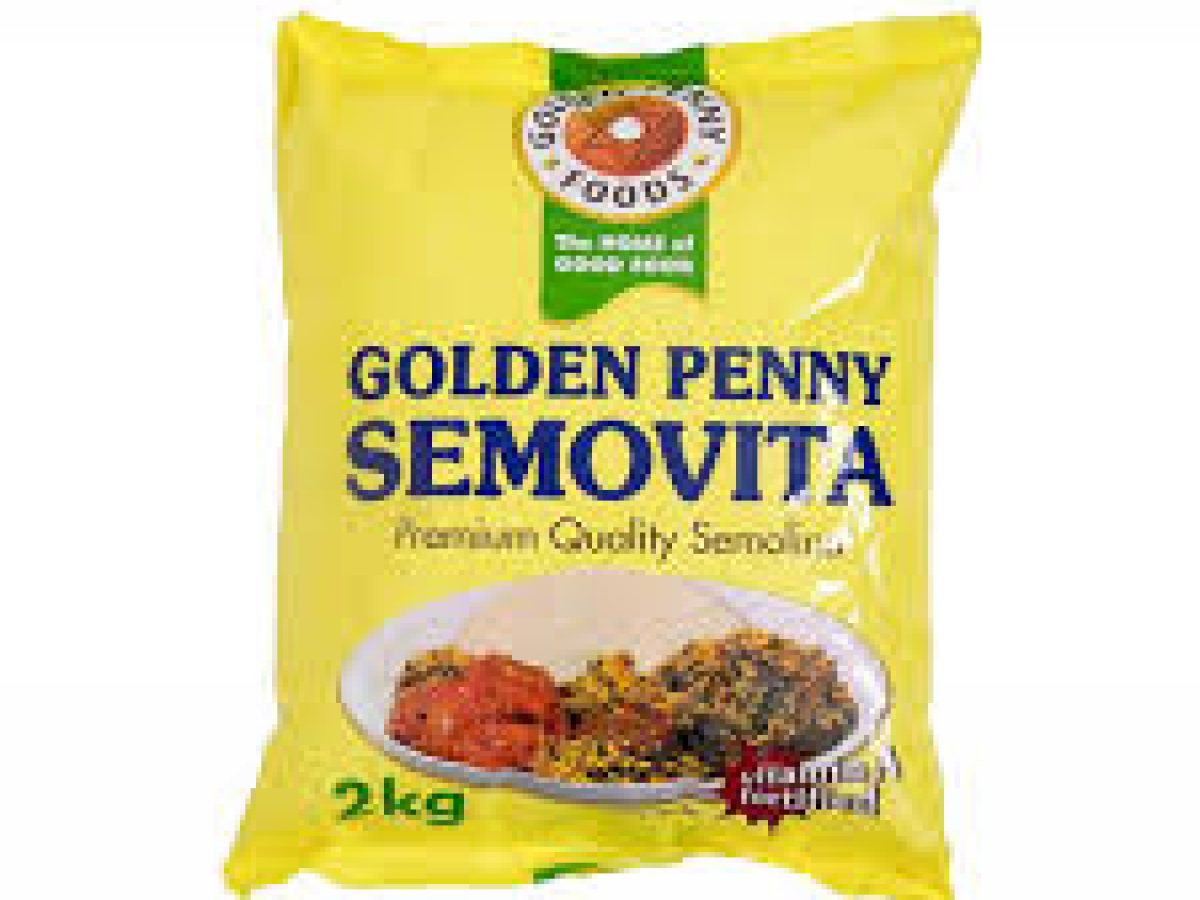Semovita is one of the most popular foods in Nigeria, hardly will you find any restaurant in the country where semovita is not on the menu. In some regions, it is even more popular than garri and pounded yam.
What is Semovita made from?
Many people confuse two words ‘semovita’ and ‘semolina’ as both of these can be used to make ‘swallow’ and eaten with soup. At the same time, semovita is similar to semolina, which is made from wheat (the type of wheat influences the final color). Is semovita made from corn? Is it rich in vitamins and proteins? What is semovita production all about? Let’s answer these questions and share the culinary tips for making an interesting meal.
Semovita ingredients
As we have already understood, semovita is also made from wheat also. Its color is closer to white since it’s made from wheat. The 100 gram serving of semovita has approximately 360 calories. This popular Nigerian food is often taken with different types of soup.
Semovita nutrition
Semovita flour can be enriched, meaning that food manufacturers re-add nutrients that were lost during the processing of the durum wheat grain. Enriched Semovita contains higher levels of vitamins and minerals than unenriched alternatives. Semovita is high in protein and fiber — both of which slow digestion and increase feelings of fullness between meals. It’s also high in B vitamins like thiamine and folate, which have many important roles in your body, including helping convert food into energy. Additionally, Semovita is a good source of iron and magnesium. These minerals support red blood cell production, heart health, and blood sugar control.
Health Benefits of Enriched Semovita
This food is nutritious and provides high levels of various B vitamins, iron, protein, and fiber.
May promote weight loss: Semovita is high in several nutrients that may support weight loss. For starters, a 1/3 cup (56 grams) of uncooked, enriched Semovita provides 7% of the RDI for fiber — a nutrient that many diets lack. Studies associate a fiber-rich diet with weight loss and lower body weight. It can reduce feelings of hunger and prevent future weight gain. For example, a study in 252 women found that every 1-gram increase in dietary fiber per day resulted in weight loss of 0.5 pounds (0.25 kg) over 20 months.
Semovita is also rich in protein, increasing protein in your diet has been shown to promote weight loss. For example, a review of 24 studies noted that a high-protein diet compared to a standard-protein diet resulted in 1.7 pounds (0.79 kg) greater weight loss. Increasing protein in your diet may also help reduce hunger, preserve muscle mass during weight loss, increase fat loss, and improve body composition. Foods rich in protein and fiber like Semovita can increase feelings of fullness and reduce hunger. In turn, this may promote weight loss.
Supports heart health: A fiber-rich diet may reduce your risk of heart disease. A review of 31 studies found that people with the highest fiber intake may have up to a 24% reduced risk of heart disease, compared to those with the lowest fiber intake. Fiber may support heart health by lowering LDL (bad) cholesterol, blood pressure, and overall inflammation. A small 3-week study observed that eating 23 grams of fiber per day from whole grains like Semovita reduced LDL cholesterol by 5%. Furthermore, Semovita contains other heart-healthy nutrients like folate and magnesium. Diets rich in these nutrients help support heart health.
A study in over 58,000 people found that the highest intake of folate — compared to the lowest intake — was associated with a 38% reduced risk of heart disease. What’s more, studies indicate that magnesium-rich diets support overall heart health. For example, a study on over one million people showed that a 100 mg per day increase in dietary magnesium reduced heart failure risk by 22% and stroke risk by 7%. Semovita is rich in nutrients like fiber, folate, and magnesium all of which protect your heart and may reduce your risk of heart disease.
May improve blood sugar control: Semovita may improve blood sugar control due to its high levels of magnesium and dietary fiber. Maintaining healthy blood sugar levels is an important factor in reducing your risk of type 2 diabetes and heart disease. Magnesium may improve blood sugar control by increasing your cells’ response to insulin, a hormone that regulates your blood sugar levels. In fact, magnesium-rich diets have been associated with up to a 14% reduced risk of diabetes in some studies. Semovita is also rich in fiber, a nutrient essential for blood sugar control. Fiber slows the absorption of carbs into your bloodstream, helping control blood sugar spikes after a meal. It can also lower fasting blood sugar levels in people with diabetes. Additionally, diets rich in fiber may reduce hemoglobin A1c levels, and average blood sugar reading over a 3-month period in people with diabetes by up to 0.5%.
Rich in iron: Iron is an essential mineral that plays many roles in your body. Some functions of iron include :
- transporting oxygen through your blood
- DNA synthesis
- growth and development
- immune system support
Semovita is an excellent source of iron with a 1/3 cup (56 grams) of uncooked, enriched Semovita providing 13% of the RDI for this nutrient. Without enough dietary iron, your body cannot produce enough red blood cells. As a result, a condition called iron-deficiency anemia may develop. Iron deficiency is the most common micronutrient deficiency worldwide. Increasing your intake of iron-rich foods may lower your risk of deficiency and subsequent anemia.
However, Semovita like other plants contains non-heme iron, which is not absorbed as well as the heme iron found in animal products like meat, poultry, and fish. Fortunately, adding foods rich in vitamin C like citrus fruits, berries, and tomatoes to meals with Semovita can help increase the absorption of non-heme iron.
Supports digestive health
Improved digestion is one of the many health benefits of dietary fiber. A 1/3-cup (56-gram) serving of uncooked, enriched Semovita flour packs over 2 grams of fiber or 7% of the RDI for this nutrient. Dietary fiber provides many benefits for your digestive system. For example, it stimulates the growth of friendly gut bacteria. A healthy balance of gut bacteria affects many areas of health like optimal digestion, immune health, and metabolism.
Additionally, fiber intake promotes regular bowel movements and may help treat constipation. For instance, a two-week study found that people who ate 5 grams of additional whole-grain fiber daily had improvements in constipation and less bloating. ALSO READ: Indomie Instant Noodles: Calories Health Benefits, Side Effects
How To Prepare Semovita
Here is how to make semovita:
- Pour about 500ml of water into a clean pot and leave to boil on high heat.
- Take a bowl, pour a cup of Semovita into it, and add some cool water to the bowl. Use the wooden spatula to stir the water and Semovita continuously until a smooth consistency is achieved.
- When the water in the pot is boiling, reduce the heat of the stove to medium heat, and then pour the mixed Semovita into the boiling water.
- Continue stirring for 1-2 minutes and then allow to cook on low heat for about a minute.
- Stir again until the texture is consistent and then turn off the heat.
Your Semovita should be perfect and ready to serve! Serve with Onugbu soup, Egusi soup, or any other soup of your choice.
How to make semovita for baby
If you are cooking semolina OR semovita for a baby or for complimentary feeding you need to make it soft, something between a porridge and a soup to make it easy for the baby to swallow. As a rule, such a meal is cooked with the help of a lot of water or milk, depending on the baby’s preferences. SEE: Health Benefits and Side Effects of Pounded Yam





